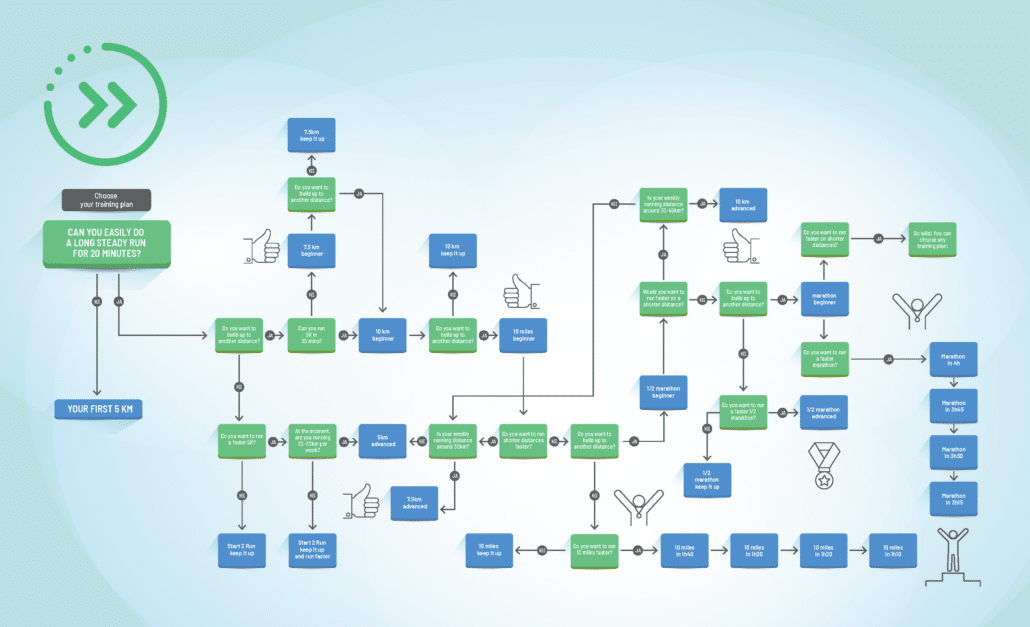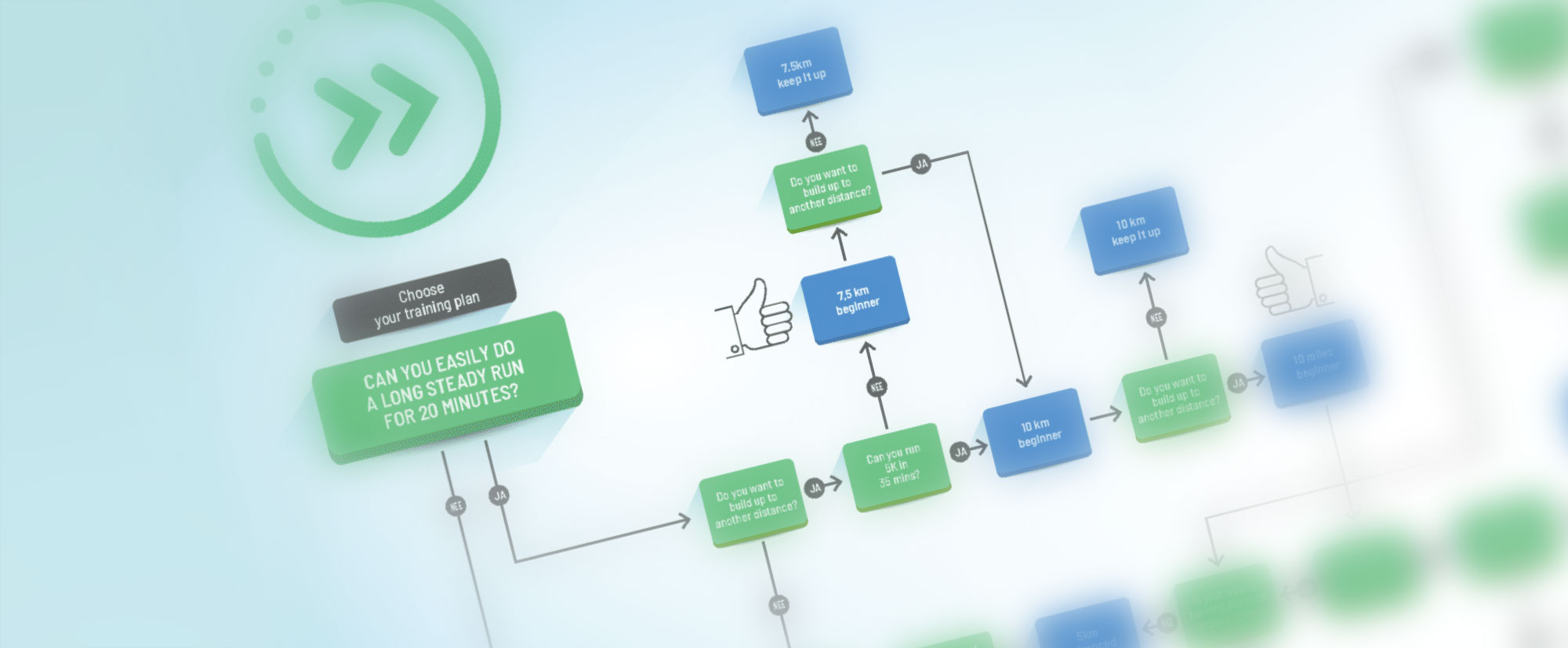Which training plan suits me best?
Like so many others, you probably started with the Start 2 Run training plan with the aim of running for half an hour at a time. But when you’re finished with that schedule, what’s next? The road is open, the choice is yours which direction you want to go.
Why use a training plan?
First of all, I would like to consider the usefulness of a training plan. Of course, you can just hit the road, and run a little longer each time, try more each time … But be careful, because at such moments an injury isn’t that far away. A training plan helps you to build up step by step, it takes into account “rest weeks” in which your workouts are less intensive so that your body can get used to it.
The schedule is also much more than simply completing your workouts lesson after lesson. The schedule takes your weekly total into account, it provides variety to keep your muscles stimulated without overloading them. Spicy interval training afterwards requires a gentle recovery training, intensive endurance training appeals to your sugar reserves, extensive training sessions are ideal for fat burning. The schedules in the Start 2 Run app have been drawn up by experienced top sports coaches, who translated the scientific background into feasible plans that lead you to your sporting goal.
Where do you stand now?
Before you can determine where you want to go, it is important to consider where you stand now. Have you just finished the first 5 km, or have you made even more progress? How are you currently feeling at the end of your schedule? Do you feel comfortable or does the training still require a lot more effort than expected? Your feeling determines how fast you can jump forward. Don’t get tempted by wanting to go too fast, but build in enough time to build up step by step. If you go too fast, you increase the risk of injuries. And then it’s like pulling the wrong “chance” card in Monopoly… suddenly an injury pops up and you have to go to jail or return back to the start.
What is your goal?
A goal gives you the motivation to keep going, choose a feasible goal or work with intermediate goals. Small successes are just as important as a big milestone! Your body and head tell you how you are doing and what you can handle. Listen to it, because if one of the two says “no”, it is important to find out what the reason for that “no” is and how to solve it. Ignoring a “no” about your body or your thoughts can work for a while, but in the long run, it breaks you down.
Let’s get down to business!
Of course you want to know which schedule suits you … Instead of writing all that out, I have drawn up a route, a walking route say 🙂 Follow the arrows and you will arrive at your training plan! Good luck!






